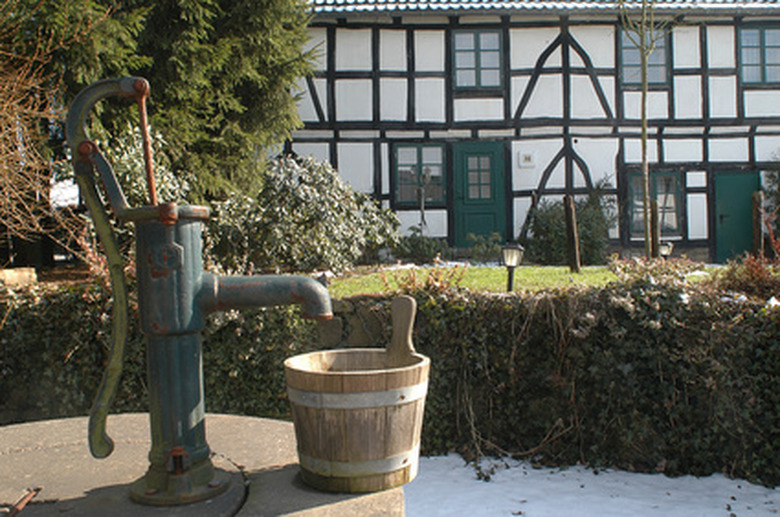Problems Watering Plants With Well Water
Chlorinated water and fees from municipal water sources make a gardener yearn to have a well for irrigation. For gardeners who can access a well, groundwater issues exist too–sometimes negatively affecting plants. With changing water tables and the leaching of fertilizers and chemicals from agricultural lands, knowing the quality of your well water is paramount. This is especially true for vegetable gardeners who want foods free of trace contaminants.
Water Quality
Similar to issues regarding the safety and quality of drinking water, garden plants also respond to water quality. Wells used only for irrigation draw from groundwater resources. Natural soil, rocks or other underground features contribute to the quality of the water drawn from the well. Human activities also potentially affect groundwater quality, such as use of fertilizers and pesticides. Even proximity to dumping grounds causes leaching of heavy metals into groundwater.
- Chlorinated water and fees from municipal water sources make a gardener yearn to have a well for irrigation.
- For gardeners who can access a well, groundwater issues exist too–sometimes negatively affecting plants.
Test your well water based on your garden use. Mississippi State University Cooperative Extension advises taking a water sample to a private laboratory, local cooperative extension office or public water service provides insight into what chemicals, salt minerals, or pollutants exist. Knowing this information helps explains why certain plants falter from causes such as traces of herbicides or high levels of salt or zinc, which causes plant death.
Water pH
Pure water bears a pH of perfect neutrality (7.0). Well water's pH depends on the properties of the soil and rocks the groundwater infiltrates and surrounds. Plants react and tolerate various levels of pH in the soil, and water pH can help or hurt plants. Acid-loving plants like azaleas and magnolias may not grow well when constantly watered with alkaline water (pH over 7.0) in the irrigation system. Conversely, plants that succeed in neutral to alkaline soils may look stunted or scalded if drenched in acidic (pH lower than 7.0) irrigation water. Testing the water reveals the pH and informs decisions about the use of the water on certain plants in the garden.
- Test your well water based on your garden use.
- Testing the water reveals the pH and informs decisions about the use of the water on certain plants in the garden.
Water Temperature
Generally speaking, plants receive rainfall that is at a temperature close to the ambient temperature. Groundwater, from where the well taps, remains at a relatively constant temperature year round. Once pulled to the surface, especially in summer, this cool water can cause reactions to foliage on certain plant species, especially tropical plants like tomatoes or corn. Cool water cools soil temperatures, which can stunt root growth. In spring and fall, well water temperatures may naturally match temperatures in the landscape. In winter, well water temperatures may exceed air temperatures and can melt frost and warm soil to bring plants out of dormancy prematurely.
